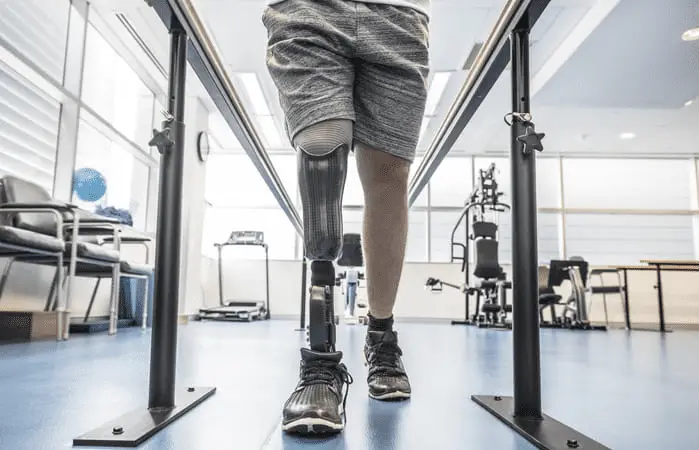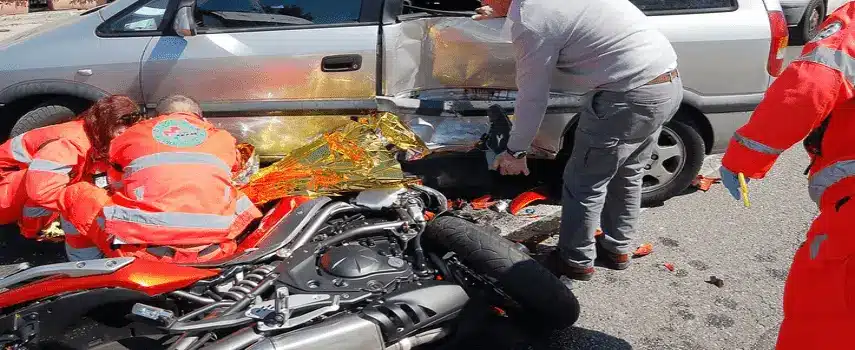Amputations as a result of a motorcycle crash are not a common occurrence, but they are severe injuries that can have a significant impact on an individual’s life. According to data from the National Highway Traffic Safety Administration (NHTSA), amputations represent a small fraction of total motorcycle accident injuries. However, the exact frequency of amputations in motorcycle collisions is difficult to determine, as data collection and reporting methods vary and may not capture all cases.
Motorcycle Crash and Amputation
The frequency of amputations in a motorcycle collision varies depending on the severity of the crash and the type of motorcycle involved. The NHTSA reports that amputations represent an estimated 3 to 5 percent of all motorcycle-related injuries. However, these numbers may not reflect the true frequency of amputations, as some cases may go unreported or misclassified.
Causes of Amputations After a Motorcycle Accident
Amputations can occur due to various causes, including motorcycle accidents. Some of the common causes of amputations include:
- Traumatic Injuries: According to Johns Hopkins Medicine, traumatic amputations can occur as a result of high-impact accidents such as motorcycle collisions. Traumatic amputations are usually the result of a limb being severed or cut off by a sharp object such as metal or glass. They account for 45 percent of all amputations.
- Crush Injuries: Compression of the limb between two objects can cause crush injuries, leading to tissue damage. Crush injuries are commonly seen in motorcycle and industrial accidents, where heavy machinery or equipment is involved.
- Degloving Injuries: In some cases, a motorcycle crash can result in a degloving injury. When this happens the skin and tissue are stripped from the underlying bones and muscles. If the extent of the degloving injury is severe, an amputation may be necessary.
- Medical Conditions: In some cases, a motorcycle accident can cause a medical condition. An example of this is severe infection that can lead to amputation.
Regardless of the cause, an amputation as a result of a motorcycle accident can have a profound impact on an individual’s quality of life.
What Are the Different Types of Amputation After a Motorcycle Crash?
Several types of amputations can occur after a motorcycle accident. Some of the most common types include:
- Partial Amputation: A partial amputation occurs when a portion of a limb is detached, but some tissue remains to connect the limb to the body.
- Complete Amputation: A complete amputation occurs when a limb is fully detached from the body, leaving no tissue connecting it to the body.
- Disarticulation: Disarticulation is surgically removing a limb at a joint such as an elbow or knee.
- Trans-Tibial Amputation: A trans-tibial amputation involves the removal of the lower leg below the knee.
- Trans-Femoral Amputation: A trans-femoral amputation involves the removal of the upper leg above the knee.
- Trans-Radial Amputation: A trans-radial amputation involves the removal of the forearm below the elbow.
- Trans-Humeral Amputation: A trans-humeral amputation involves the removal of the arm above the elbow.

The type of amputation will depend on the severity of the injury and its location on the limb.
The specific type of amputation will have a significant impact on the individual’s recovery, rehabilitation and overall quality of life.
It may require the use of prosthetic devices or adaptive equipment to allow for mobility and independence.
What Happens After a Motorcycle Crash Amputation?
After an amputation, the individual will typically undergo a period of recovery and rehabilitation. This may include:
- Hospitalization and Wound Care: Hospitalization may be necessary to manage the amputation wound, monitor for any complications and provide pain management. The amputation wound may need to be cleaned and dressed regularly to promote healing.
- Physical Therapy: Physical therapy is an important part of the rehabilitation process following an amputation. Physical therapists will work with the individual to help them regain strength and mobility. Therapists will also help them learn how to use prosthetic devices or adaptive equipment if needed.
- Prosthetic Devices: Depending on the type of amputation and the individual’s needs, a prosthetic device might be necessary. This helps the individual regain mobility and independence. Adaptive devices such as a wheelchair might also be necessary.
- Psychological Support: Motorcycle crash amputations can have a profound emotional impact on individuals and their loved ones. Psychological support such as counseling or therapy can help individuals and their families. It helps them adjust to the changes and challenges associated with amputation.
- Vocational Rehabilitation: Depending on the individual’s job or career, vocational rehabilitation may be necessary to help the person return to work or find new employment.
The exact course of recovery and rehabilitation will depend on the individual’s specific situation. However, with the right support, care and rehabilitation, many individuals are able to lead full, active lives after an amputation.
Does Insurance Pay for Motorcycle Crash Amputations?
Insurance may cover the costs associated with a motorcycle accident amputation, depending on the type of coverage involved.
- Health Insurance: Health insurance such as Medicare may cover the costs of hospitalization and rehabilitation related to amputation.
- Disability Insurance: If the individual cannot work due to the motorcycle crash, disability insurance may provide financial support during the recovery period.
- Automobile Insurance: The injured individual may have a motorcycle accident due to negligence. In such cases, the other driver’s automobile insurance might cover the costs. This includes medical expenses and lost wages.
- Workers’ Compensation: If the individual had a motorcycle accident while working, workers’ compensation insurance may provide financial support. This includes coverage for medical expenses and lost wages.
It is important for individuals to review their insurance coverage in the event of a motorcycle accident amputation. In some cases, individuals may need to take legal action to ensure that they obtain the compensation they deserve.
Can a Lawsuit Cover a Motorcycle Crash Amputation if it Was Due to Negligence?
Yes, if a motorcycle accident amputation was caused by the negligence of another party, the individual may be able to recover compensation through a personal injury lawsuit. In a personal injury lawsuit, the individual must prove that the other party had a duty of care and breached it.
Next, they need to show the breach caused the individual’s injuries, including the amputation. If the individual had a motorcycle crash due to the at-fault person’s distracted driving, the individual might sue the motorist. The lawsuit would allege that the driver was negligent and that this negligence caused the individual’s amputation.
In a personal injury lawsuit, the individual may recover compensation for medical expenses, lost wages and pain and suffering. It is important to note that personal injury lawsuits can be complex and can take a significant amount of time to resolve, so it is important for individuals to work with an experienced personal injury attorney to ensure that their rights are protected.




